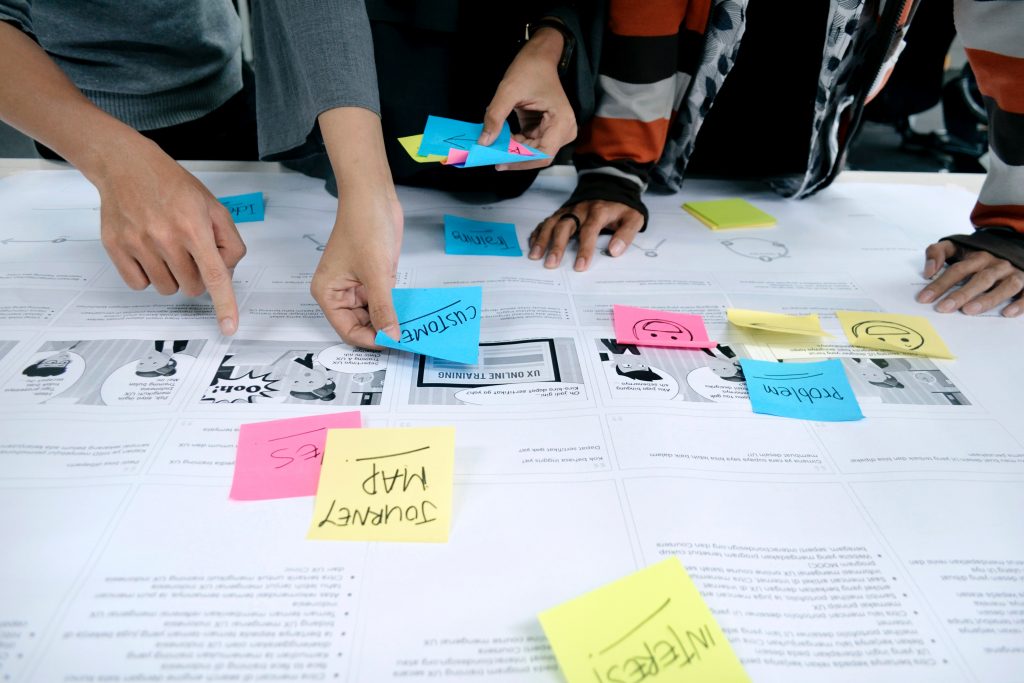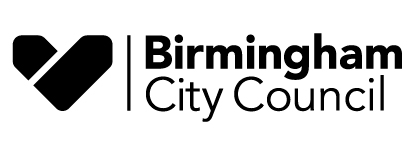Earlier this year we embarked on the challenge of developing a new digital strategy for Birmingham City Council. We knew we wanted to form a multidisciplinary team and undertake the work using human-centred design principles, whilst adopting an agile delivery approach. We partnered with Methods and worked collaboratively throughout, developing our skills and knowledge, experiencing through doing.
Understanding our users
We sought to understand who the users of the strategy are and what their needs are. We found that users were both internal and external. We conducted user research, through interviews, workshops and surveys to better understand the experiences and needs of Birmingham’s citizens and businesses and the council’s staff. We spoke to staff working in IT and Digital, front line staff in directorates, Councillors, senior leaders and managers. We had over 350 responses from our two surveys that went out to citizens and businesses.

We found that:
- citizens want to see the beautiful city of Birmingham showcased on the council website
- the website is very text heavy in places and some users find it difficult to find what they are looking for
- the BRUM account is a very popular service and users would like to see it expanded
- some people are using the BRUM account on behalf of elderly relatives, but it’s not always clear how to do this effectively
- not all businesses are aware they can use the BRUM account for commercial matters
- some council staff find it difficult to get their IT issues resolved quickly
- training on new software isn’t always sufficient for staff and Councillors
Knowing our starting point
We conducted desk research to understand what the existing landscape was across the council and to establish a baseline that we could measure performance of the strategy against in the coming years. Our timing was fortunate and meant we were able to take advantage of the digital maturity analysis done by GDS across England, which helped us to better understand what our level of digital maturity is, using the Local Digital Declaration as a benchmark.
The public sector
We also wanted to understand what was happening across the public sector and particularly those making exciting things happen and the challenges they are facing. We know that Birmingham is a unique city in so many ways, but we also know that when it comes to digital transformation in the public sector, we are very similar to many of our local authority peers. We spoke to Hackney, Greenwich, Dorset, Adur and Worthing, Coventry, Norwich, Wales, Department for Education and LOTI who shared with us their approach. We reviewed strategies and pulled out recurring themes to help shape our initial thinking.
What we found
We learnt that:
- we have to quickly demonstrate the value of an agile, design-led approach to get buy in and build credibility
- we need to work with teams that are keen to engage with us
- neutralising our language will help to bring the digital people and technology people closer together
- we need to understand how to de-prioritise things that are not aligned to our strategy
- upskilling our existing council staff is going to be crucial to empowering them to adopt digital ways of working
- building the capability of the teams in IT & Digital first will facilitate and support the upskilling of the rest of the council
- we need to remain open to different ways of approaching challenges
Writing our strategy
After conducting analysis and synthesis of our research, and much discussion and iteration with senior leaders we landed on five strategic themes:
- Building the council’s digital and data skills
- Improving our data and evidence-based decision making
- Creating online services that are easy to use
- Giving our council teams the right digital tools to do their jobs
- Building the best technology to support council services
We assigned two theme owners to each theme. These were all members of the senior leadership team within the Digital and Customer Services directorate, thereby sharing the responsibility of effective delivery of the strategy across multiple stakeholders. Senior sponsorship came from the CIO and Director.
We mapped our user research findings to each theme to surface what areas we should focus on. This enabled us to discuss with theme owners what shape we wanted each theme to take.
We then began the process of putting pen to paper, working with our content designer to craft the statements, getting feedback from stakeholders and honing the words further. We aimed to stay true to the user research findings, often coming back to the evidence to justify choices. We aimed for a meaningful document that was accessible for citizens and staff across the council, which includes an easy read version.
Our UX Designer worked up some wireframes of the strategy web pages, and we tested these and our draft content with a number of internal and external users, aiming for a breadth of digital literacy amongst our participants. We fed these findings into the design and content and have landed on our final strategy. We are in the process of circulating the new strategy more widely and welcome your thoughts and feedback.
Next steps
Over the coming months we will be developing our delivery plan and investment case to take forward for cabinet approval. Much of the detail about how we will deliver this in practice will sit in the delivery plan, so this will be a practical document that will help relevant teams fulfil the promises of the strategy.
